Virtual Travel
A Smithsonian magazine special report

Take a Free Virtual Tour of Five Egyptian Heritage Sites
The sites include the 5,000-year-old tomb of Meresankh III, the Red Monastery and the Mosque-Madrassa of Sultan Barquq
Theresa Machemer
Correspondent
:focal(719x274:720x275)/https://tf-cmsv2-smithsonianmag-media.s3.amazonaws.com/filer/95/b4/95b48e97-391f-4f2c-9519-9fa5f170a51d/screen_shot_2020-04-17_at_14914_pm.png)
Earlier this month, Egypt’s Ministry of Tourism and Antiquities announced the release of five new virtual tours of historic sites, adding to the range of online adventures that you can now embark on from home.
The tours explore the tomb of Meresankh III , the tomb of Menna , the Ben Ezra Synagogue , the Red Monastery and the Mosque-Madrassa of Sultan Barquq . Each virtual experience features detailed 3-D imagery through which users can “walk” by clicking hotspots along the structures’ floors.
As James Stewart reports for the Guardian , the tours boast “beefed up” 3-D modeling made by experts with Harvard University’s Giza Project . Unlike their real counterparts, most of which charge a small entry fee, the virtual renderings are free to all.
“The virtual tours target both [international] tourists and Egyptians, a ministry spokesperson tells Al-Monitor ’s Amira Sayed Ahmed. “They serve the double purpose of promoting Egyptian tourism nationwide and increasing Egyptians' awareness of their own civilization.”
Two of the tours—the tombs of Meresankh III and elite Egyptian official Menna —include background information accessible by clicking circles overlaid atop specific features. The former’s tomb, dated to some 5,000 years ago, is the oldest of the Egyptian sites available as a virtual walkthrough. Meresankh, a queen wed to King Khafre, was the daughter of Prince Kawab and Hetepheres II of the fourth dynasty, and the granddaughter of Great Pyramid builder Cheops, also known as Khufu.
Harvard archaeologist George Andrew Reisner discovered the queen’s tomb in 1927. He later stated that “None of us had ever seen anything like it.” Today, the burial place’s paintings and carvings remain well-preserved, showcasing hunters catching water birds, bakers making triangular loaves of bread and servants holding offerings.
In the northern chamber, along the wall furthest from the virtual tour’s starting point, ten statues of women stand shoulder to shoulder—an unusual sight among Gaza tombs. The statues “serve to emphasize Meresankh’s position among her queenly relatives,” the tour explains. Along the path to the 16-foot-deep burial shaft, users pass a pair of statues depicting Meresankh and her mother, Hetepheres II, with their arms around each other.
The path leads down a spiraling staircase into the burial shaft, where Meresankh’s black granite sarcophagus—originally created for her mother but re-engraved upon the queen’s death in 2532 B.C., according to the History Blog —was originally found. The tour includes a reconstructed image of the chamber with the sarcophagus in place, but the actual coffin is now kept at the Egyptian Antiquities Museum in Cairo.
The tomb of Menna, dated to the 18th dynasty (about 1549 B.C to 1292 B.C.), is “one of the most visited and best preserved” from the era, the ministry writes in a statement quoted by Live Science ’s Laura Geggel. The tomb’s decorations suggest the elite official was a scribe in charge of the pharaoh’s fields and the temple of sun god Amun-Re.
Menna’s tomb also includes informational blurbs highlighting such features as paintings of the scribe’s family, including his wife Henuttawy and their five children. Curiously, all of the paintings of Menna have been defaced.
“The ancient Egyptians believed that the soul of a person inhabited paintings of them and destroying the face would ‘deactivate’ the image,” the tour notes. “Why would someone want to destroy the memory of Menna?”
The tomb also served as a point of communication with the dead. It once featured life-size statues of Menna and Henuttawy that family members could make offerings to, ask for favors or visit during festivals.
The other three tours do not offer information blurbs at this time, but they still have plenty of detailed 3-D imagery for virtual visitors to explore. The Red Monastery , a Coptic church in Upper Egypt, features ornate frescoes, while the 14th-century Mosque-Madrassa is known for its immense size and innovative architecture. The Ben Ezra Synagogue in Old Cairo is alleged to be the site where baby Moses was found.
“Experience Egypt from home,” says the Ministry of Tourism and Antiquities on Facebook . “Stay home. Stay safe.”
Get the latest stories in your inbox every weekday.
Theresa Machemer | READ MORE
Theresa Machemer is a freelance writer based in Washington DC. Her work has also appeared in National Geographic and SciShow. Website: tkmach.com

- Historical Periods
- Places & Collections
- What's On
- Stories & Media
- Children’s World
- World Heritage
- Explore Egypt's Map
- Privacy Policy
- Terms and Conditions
- Related links
- Predynastic Period
- Early Dynastic Period
- Old Kingdom
- First Intermediate Period
- Archaeological Sites
- Collections
- Sunken Monuments
- Stories Hub
- Child Media Hub
- Child Story Hub
- The Coloring Game
- Pharaoh's Quiz
The Egyptian Museum
The Egyptian Museum is the oldest archaeological museum in the Middle East, and houses the largest collection of Pharaonic antiquities in the world. The museum displays an extensive collection spanning from the Predynastic Period to the Greco-Roman Era.
The architect of the building was selected through an international competition in 1895, which was the first of its kind, and was won by the French architect, Marcel Dourgnon. The museum was inaugurated in 1902 by Khedive Abbas Helmy II, and has become a historic landmark in downtown Cairo, and home to some of the world’s most magnificent ancient masterpieces.
Among the museum’s unrivaled collection are the complete burials of Yuya and Thuya, Psusennes I and the treasures of Tanis, and the Narmer Palette commemorating the unification of Upper and Lower Egypt under one king, which is also among the museum’s invaluable artifacts. The museum also houses the splendid statues of the great kings Khufu, Khafre, and Menkaure, the builders of the pyramids at the Giza plateau. An extensive collection of papyri, sarcophagi and jewelry, among other objects, completes this uniquely expansive museum.
Opening Hours
Our insider tips, last ticket.
Tickets window closes at 6:00 PM
Free tickets
Except Friday, Saturday and public holidays: 1. Egyptians and Arabs seniors aged 60 and over 2- Egyptians and Arabs special needs 3- Orphaned children 4- Public schools trips primary and preparatory school
Photography& Video Tickets
FOREIGNERS: Photography: EGP 50 Video: EGP 300 EGYPTIANS\ ARABS: Photography: EGP 20 Video: EGP 300 - Photography (Personal Use – without Flash) - With the exception of King Tutankhamen’s Mask Room
Photography
- Private photography is permitted inside the museum after paying ticketfees. - Please refrain from taking photographs of other visitors or staff as it may violate their personal rights. - Please refrain from taking video recordings (cell phone, cameras) in the galleries unless you have paid the appropriate ticket fees. - Taking photographs and video recordings for commercial use (TV, cinema, programmes, advertising, documentary clips, etc.) are permitted only after obtaining permission from the concerned authority and paying the daily rate. - Please refrain from using flash photography. - Please refrain from using camera holder until after purchasing its ticket.
General Policies
- Please do not touch any exhibits or showcases. - Food and drinks are not allowed within the galleries, except for small water bottles. - Smoking is prohibited throughout the museum. - Please refrain from disorderly, disruptive, and offensive language or actions. - Please be mindful of others, and be quiet when using your cell phone. - Audio players are not permitted throughout the museum. - For the safety of the exhibits, please do not use flashlights or laser pointers inside the museum. - Appropriate attire is requested. - Please do not lay down on seats or on the floor, and do not remove your shoes. - Please follow all posted signs and visitor instructions.
- In times of emergency such as an earthquake or fire, please follow the instructions of museum staff. - In the event of an earthquake, please move away from large sculptures, displaycases, and other objects that may fall down.
With regards to the students of Art Faculties, please conduct yourself respectively in regards to the following: - The use of pens and pen markersare prohibited in all galleries: only pencils may be used in taking notes or sketching. - Sketchbooks exceeding 18 x 24 inches are not permitted. - Please do not hinder visitor traffic flow in the galleries by blocking visitors or walking paths.
Items that Are Not Allow
Large bags, large backpacks, Luggage or parcels larger than 40x40cm are not permitted into the museum, but you will beallowed to store them in the cloakroom. Bags and backpacks may be subject to search at any time. Do not bring any sharp itemsor dangerous materials into the museum, such as knives, screwdrivers, scissors, and firearms. These items must be stored in the cloakroom. Do not bring umbrellas into the museum, please leave store them in the cloakroom. Do not bring folding seats or any other type of transportable seatinginside the galleriesbefore you obtain permission from the museum security. Animals or pets are not allowed to enter the museum. Musical instruments are not allowed inside the museum. Do not bring any advertising banners or carry placards or signs inside the museum unless you obtain approval from the concerned authorities.
Families with Children
Children must be accompanied by an adult inside the museum at all times. For the safety of your children and the exhibits, please ensure that children do not run, play, or bump into exhibits or visitors.
Ramadan Visit Hours
09:00am – 04:00pm Last Ticket The tickets window closes at 3:00 PM
Our Services

Information

Ramped Entrance

Braile Labls

sign language

- Sunday, 14 April 2024
Tutankhamun's treasures exhibited in virtual tour
Nevine el-aref , thursday 28 may 2020.
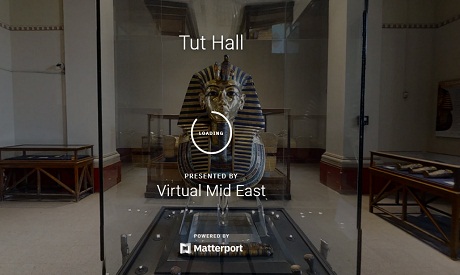
The treasury hall of King Tutankhamun at the Egyptian Museum in Tahrir is the new virtual tour launched today by the Ministry of Tourism and Antiquities social Media platforms.
The hall shows several of the golden king’ treasures collection uncovered inside his tomb at Luxor’s Valley of the Kings. Among the most significant objects on display are the Gold Mask, the innermost coffin, made of solid gold, the middle coffin an the gold coffinettes for his internal organs.
On the 4th of November 1922, British archaeologist Howard Carter made the most spectacular discovery in the history of archaeology, the tomb of the boy-king Tutankhamun.
Painstakingly excavated over the course of almost ten years, its four small rock-cut chambers hidden beneath the sands of the Valley of the Kings yielded over 5,000 incredible objects, bearing witness to the life and death of this king.
Most likely the son of the “heretic” king Akhenaten, Tutankhamun ascended the throne at around the age of nine, in the aftermath of the great religious upheaval of the Amarna Period. He was married to Ankhsenamun, third daughter of Akhenaten and his chief queen, Nefertiti. Early in his reign, the golden pharaoh restored wealth and power to the great god Amun-Re, whose worship Akhenaten had suppressed. Although a recent CT scan of Tutankhamun’s mummy has revealed interesting new information about the techniques in his mummification, and has confirmed that he was about 10 when he died, the cause of his death is still uncertain.
Most of the objects discovered in the tomb of Tutankhamun on display here were actually used during his lifetime. Others, in contrast, were made specifically to be buried with him. What both types of objects have in common, however, is that they all stand as testimonies to their makers’ mastery of their craft, and to the great wealth that the royal treasury had accrued through the empire that the kings of the New Kingdom had built.
King Tutankhamun
The egyptian museum, virtual tou, latest news, most viewed, also in museums.
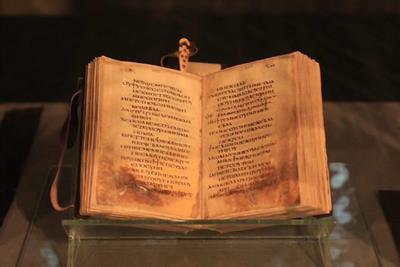
- Virtual Tour of Giza Pyramids and Egyptian Museum

- Live Egyptologyst Tour Guide
- Cairo Intl Airport, Cairo Egypt
- Cairo International Airport, Heliopolis, El Nozha, Cairo Governorate, Egypt
- Not wheelchair accessible
- Most travelers can participate
- This is a private tour/activity. Only your group will participate
- For a full refund, cancel at least 24 hours in advance of the start date of the experience.
- You'll get picked up See departure details
- 1 Pyramids of Giza Stop: 25 minutes See details
- 2 The Museum of Egyptian Antiquities Stop: 40 minutes See details
- You'll return to the starting point

- aubreyalysseh 0 contributions 5.0 of 5 bubbles Excellent, informative tour service This was an awesome tour! We were able to customize the itinerary to see specific sights. The guide was very knowledgeable and we learned so much about the sights & ancient Egyptian culture. He went above and beyond helping us get our covid tests and results to depart Egypt. Read more Written July 19, 2021
More to explore in Cairo

Virtual Tour of Giza Pyramids and Egyptian Museum provided by Egypt Tour Guide - Ragab
Please enable JavaScript in your web browser to get the best experience.

Virtual Visit Myth-busting ancient Egypt
Students taking part in a Virtual Visit.
Share the page
- Share on Facebook
- Share on X (formerly Twitter)
Key information
Session times.
Workshops are held every weekday: 10.45–11.45 12.30–13.30 14.00–15.00
Booking information
Free, for UK schools only, booking online essential. Read the privacy policy . Cancellation and no-show policies apply. See terms and conditions .
Connect your class to the British Museum for a free live interactive workshop.
Book this workshop and your students will be taught remotely by an expert from the British Museum. Through live activities, interactive quizzes and thought-provoking questions your class will enhance their knowledge and understanding of the past. The expert will help them develop their historical enquiry skills and challenge them to think critically.
Students will become British Museum Myth-busters. This new job requires historic enquiry skills, the ability to sift arguments and creative flair. Investigating objects from the collection and weighing up the evidence, they will develop their own perspective and judgements about ancient Egypt's common misconceptions.
Ages: 7–11 (KS2)
Curriculum links: History
Session time: 60 minutes
Support notes for your workshop
What does learning look like during this virtual visit.
- Virtual Visits are live interactive workshops linking your classroom to an expert in one of the British Museum's learning rooms.
- They have been designed to incorporate a broad range of learning techniques.
- Your students will take an active role throughout the Virtual Visit.
- Virtual Visits acknowledge that learning is not only about knowledge and understanding. It encourages students to be inspired and excited to visit museums, to develop their close observation competency, and to enhance their communication skills to express and share their own thoughts.
- This workshop does not involve virtual reality, augmented reality or a virtual tour of the galleries.
What will be studied during this Virtual Visit?
- The Virtual Visit begins with an introduction to the British Museum and its collection of eight million objects.
- It centres around a variety of ancient Egyptian objects from the British Museum collection.
- Students are recruited as British Museum myth-busters and they are issued a to-do list with three areas of ancient Egyptian history to investigate.
- Students will participate in an 'interview' for the role of myth-buster using the platform Kahoot on their devices. The quiz will aid their understanding of the differences between myths and facts and encourage them to think critically about information presented to them.
- Students are guided through a series of three activities. Two of which are supported using a printed booklet, emailed prior to the Virtual Visit. If students do not have access to a printed version, it can be completed with a piece of paper.
- Students investigate ancient Egyptian hieroglyphs. They match ancient Egyptian objects displaying hieroglyphs with their modern-day equivalents. They will be supported to understand that ancient Egyptian hieroglyphs are not secret codes, but they were one of the scripts used for writing and communicating all kinds of different information.
- Students investigate ancient Egypt's contact with other civilisations. They look at a timeline with Museum objects, that reflect on the differing ways these civilisations interacted throughout ancient Egypt's history. They are then tasked to look critically and make an informed decision of which objects they would put into a display case, just like a curator at the British Museum.
- Students investigate British Museum objects found in burials. Using an image of a reconstructed luxurious ancient Egyptian tomb, they will consider what kinds of objects people were buried with. They will look closely at funerary objects from the Museum collection to establish that the afterlife was of great importance to the ancient Egyptians and each object served a purpose.
- The session will end by looking at the great pyramid of Giza.
How does this Virtual Visit link with the UK's national curriculums?
England, The National Curriculum in England, Key stage 2, History
- The achievements of the earliest civilisations – an overview of where and when the first civilisations appeared and an in-depth study of one of the following: Ancient Sumer; The Indus Valley; Ancient Egypt; The Shang Dynasty of Ancient China.
Northern Ireland, The Northern Ireland Curriculum, Key stage 2, The world around us
- Change over time
Scotland, Curriculum for Excellence, second level, social studies: people, past events and societies
- I can use primary and secondary sources selectively to research events in the past.
- I can compare and contrast a society in the past with my own and contribute to a discussion of the similarities and differences.
- I can discuss why people and events from a particular time in the past were important, placing them within a historical sequence.
Wales, The National Curriculum for Wales, Key stage 2, History
- Chronological awareness
- Historical knowledge and understanding
- Interpretations of history
- Historical enquiry
- Organisation and communication
What key vocabulary will be used?
Afterlife, amulet, book of the dead, canopic jar, civilisation, coffin, fact, god, Hieroglyphs, Hyksos, luxury, luxurious, Kushite, myth, Pharaoh, papyrus, prism, pyramid, Royalty, Rosetta stone, sarcophagus, shabti, sphinx, Sudan, timeline, tomb.
What related resources can I use with my students?
You can discover more ancient Egypt classroom resources, either before or after your Virtual Visit.
You may also be interested in

Virtual Visit: Peek into prehistory

Virtual Visit: Roman Britain treasure challenge

Virtual Visit: Indus Valley investigation

Virtual Visit: Touring Greek temples
The Global Egyptian Museum
At a rough estimate, over 2 million objects from ancient Egypt are kept in about 850 public collections, dispersed over 69 countries around the world. This website aims to collect them into a global virtual museum, which can be visited at any time, from any place. The Global Egyptian Museum is a long-term project, carried out under the aegis of the International Committee for Egyptology (CIPEG).
The Basic Mode, currently showcasing 1340 highlights, is geared to the interested public. A glossary of more than 400 items explains Egyptian terms and themes. Many objects are provided with audio comments and 3D-movies .
The Advanced Mode , equiped with a powerfull search and data entry engine, opens up the full database - presently 14975 objects - to professionals and amateurs.
Kids! offers information for children at the age of 8-12 years in an interactive way.
You are using an outdated browser. Please upgrade your browser to improve your experience and security.

- Buy Tickets
- Join & Give
Ramses & the Gold of the Pharaohs
Exclusive to the australian museum in sydney: more than 3,000 years in the making, discover over 180 ancient egyptian treasures..
- Share this page:
- Share on Facebook
- Share on Twitter
- Share on Linkedin
- Share via Email
- Print this page

Special exhibition
Ancient egyptian treasures, vr experience.
Transport yourself back 3,300 years, across the sands of the Sahara Desert where you reach the heartbeat of Ancient Egypt ruled by the most celebrated pharaoh in the country's storied history. Experience one of the greatest collections of its kind in this Australian-first exhibition, Ramses & the Gold of the Pharaohs .
Discover ancient relics from Ramses the Great
This all-new multisensory museum experience provides visitors with a window into the life and accomplishments of Ramses II, more commonly known as Ramses the Great, who ruled Egypt for 67 years – the second longest reign for any pharaoh, living an astonishing 92 years. Exclusive to Sydney, Ramses & Gold of the Pharaohs features 182 priceless artefacts including the sarcophagus of Ramses II - one of the most impressive royal coffins from ancient Egypt ever to be discovered – and other treasures and one-of-a-kind relics, some of which have never left Egypt before. On this immersive journey visitors will discover a stunningly preserved collection of artefacts, including sarcophagi, animal mummified remains, magnificent jewellery, spectacular royal masks, exquisite amulets, and ornate golden treasures of the tomb, showcasing the superb workmanship of Egyptian artisans.
The exhibition also features a virtual reality experience that takes you on a whirlwind tour of two of Ramses' most impressive monuments: the temples of Abu Simbel and the Tomb of Queen Nefertari, the favourite Royal Consort of Pharaoh Ramses II. In cinematic motion chairs, viewers will fly through temples, sandstorms, and even come face-to-face with Ramses' mummified human remains in this electrifying animated journey. Purchase the VR experience during your Ramses & the Gold of the Pharaohs ticket purchase checkout as an add-on.
Visitors with low vision can also listen to our free audio described guide about exhibition here on our website .
This once-in-a-lifetime opportunity is both educational and exhilarating. Ramses & the Gold of the Pharaohs will give visitors an up-close look into the life, achievements, and stunning monuments of Ramses the Great.
Australian Museum Members have access to FREE and discounted tickets for Ramses & the Gold of the Pharaohs. Become a Member today! This offer ends 18 April 2024, Memberships purchased after this date do not qualify for FREE tickets.
Download the exhibition map
Ramses & the gold of the pharaohs exhibition map.
Book exclusive expert talks and tours at the Australian Museum

A Gateway to Egypt programs
Ancient Egypt is coming back to life at the Australian Museum with a limited season of talks and tours giving you exclusive access to experts and curators.

Breakfast Behind the Scenes – Egypt Unearthed
Start your day in the best possible way with fascinating tales from the finest in their field, a delicious shakshuka breakfast and exclusive guided VIP out-of-hours access to Ramses & the Gold of the Pharaohs .

Saturday Lecture Series - Exploring Ancient Egypt
Our monthly Saturday Lecture Series will captivate and delight the most devout Egyptophiles looking to deepen their understanding of Ancient Egypt.

History… with a touch of harissa. With Tomb Talks , you’ll enjoy conversation with the experts, a welcome drink and canapés and then skip the queue for entry into Ramses & the Gold of the Pharaohs , where you’ll receive an exclusive spotlight tour by an expert.

Egypt - In Conversation
Enrich your love for all things Egypt with our monthly Egypt - In Conversation series. Explore everything from hieroglyphs to hidden histories in these accessible, yet engrossing discussions of Ancient Egypt.
Win the adventure of a lifetime!
Visit the Ramses & the Gold of the Pharaohs exhibition for the chance to win a $20,000 voucher to travel with Adventure World.
Plan your visit

Ramses and Pullman Sydney Hyde Park exclusive accommodation package
Enjoy tickets to Australian Museum Ramses & the Gold of the Pharaohs exhibition, breakfast, activity packs and plush accommodation at Pullman Sydney Hyde Park.

Gift Membership
Ignite a sense of wonder and gift a year of discovery with an Australian Museum Membership.

Parking and public transport
Information on how to get to the Australian Museum including public transport options and where to park cars and bikes.

Travel through the Australian Museum’s Egyptian Collection
Travel back in time with us to explore daily life in ancient Egypt. Discover captivating stories from over 2,000 years ago through selected pieces from the Australian Museum’s Egyptian Collection.

Australian Museum Visitor Map
Check out our Visitor Map showing the locations of exhibitions, galleries and visitor facilities.

Visit & Book
Experience science, culture and nature in the heart of Sydney at the Australian Museum. Visit today with free General Admission!
Accessibility & Inclusion

Visual Story: how to prepare for your visit and what to expect
Follow this visual and written guide to help plan your visit to the AM.

Ramses & The Gold of the Pharaohs: Audio Description Tour
Be transported back 3,300 years, across the sands of the Sahara Desert as you listen to this audio described tour about Ramses II, the most celebrated pharaoh in the country's storied history. Produced by Vision Australia Audio Description Service for visitors with low vision.

Accessible and inclusive events at the Australian Museum
The Australian Museum has a range of onsite accessible programs for deaf and autistic people, as well as online audio description guides to help assist blind and low vision visitors enjoy our permanent exhibitions and special events.


Location and access
Everything you need to know about planning your visit to the Australian Museum and available accessibility features and amenities.

Accessibility and inclusion
The Australian Museum provides access to all areas of the museum for people in wheelchairs and mobility scooters, and a range of inclusive programs.
Proudly supported by the NSW Government through Create NSW Blockbusters Funding initiative.

NSW Gov RGB Reversed
Ramses & the Gold of the Pharaohs is presented in partnership with Neon, World Heritage Exhibitions and the Houston Museum of Natural Science, with the support of Egypt’s Ministry of Tourism and Antiquities.

Neon Global

Major Partner

Adventure World Travel - Travel with Purpose
Program Partner

Macquarie University (Colour horizontal)
How much are tickets.
All prices are listed on Ticketmaster. All prices include GST but booking fees apply.
Purchase your tickets now at ticketmaster.com.au
AM Member: Access to free and discounted tickets
- Each adult AM Member receives 1 x free ticket
- Each child AM Member receives 1 x 25% off discounted ticket
Do not buy tickets from un-authorised re-sellers. You risk buying fraudulent or invalid tickets.
Can you buy tickets at the door?
Tickets will be available to buy at the door, but we encourage you to buy tickets online to ensure that you secure your preferred session time. It is expected that popular sessions will sell out.
From what age are children charged for entry?
Children three years and over will be charged entry to Ramses & the Gold of the Pharaohs .
What is a Golden Ticket?
Ramses & the Gold of the Pharoahs Golden Ticket allows you entry to any Peak or Off-Peak session from the 15 December 2023.
Inclusions:
- Entry to the exhibition at any time during opening hours
- Ticket includes Audio Guide
- One-time, single entry only
- Valid for sessions from 15 December 2023.
During particularly busy periods, a short wait may be required from arrival to exhibition entry due to fire and safety capacity regulations.
Please note: Golden Tickets are available for purchase online only and cannot be purchased onsite.
What are the Concession ticket price categories?
Concession cards must be shown upon admission to receive the reduced ticket prices:
- Seniors Card-holders (all states)
- International seniors aged over 60 years
- International Student Card-holders
- Australian Student Card-holders
- Centrelink Healthcare Card-holders
- Australian Government Pension Card-holders
- Australian Veterans' Affairs Card-holders.
What is the age limit for children’s tickets?
The age limit for children's tickets is 15 years and under.
What age is the exhibition aimed at?
The exhibition is for all ages. The Virtual Reality experience is recommended for ages 8 and over.
Is there pram access?
Prams are not allowed inside the Ramses exhibition space. There is limited, unsupervised pram parking available in designated areas within the museum and close to the exhibition entrance.
More information on the Australian Museum’s accessibility features can be found here .
Are food and drinks allowed?
Food and beverages are not permitted in our galleries or exhibition spaces to ensure the preservation of our important collections. This includes water bottles.
Are we able to take photographs?
Yes, except no flash photography is allowed and commercial photography is not permitted.
What does my ticket include/exclude?
Your ticket includes entry to Ramses & The Gold of the Pharaohs exhibition. General admission to the Australian Museum is free of charge.
Exhibition tickets do not include entry to the virtual reality experience, this must be purchased separately.
What is the virtual reality experience?
The exhibition will feature an immersive virtual reality experience that takes you on a whirlwind tour of two of Ramses' most impressive monuments: the temples of Abu Simbel and the Tomb of Queen Nefertari, the favourite Royal Consort of Pharaoh Ramses II. In cinematic motion chairs, viewers will fly through temples, sandstorms, and even come face-to-face with Ramses' mummified human remains in this electrifying animated journey.
What is the minimum age for the virtual reality experience?
The VR experience is recommended for ages 8 and over, but it is the parent's discretion as some children may find the experience scary.
Do I need a separate ticket for the virtual reality experience?
What time is my virtual reality experience.
Your ticket gives you access at any time of day, so you simply line up in the queue to participate.
Should I do the virtual reality experience before or after seeing the exhibition?
The virtual reality experience can be done before or after your visit to the exhibition. Wait times for the virtual reality experience may be long, so please consider this when planning your visit to the Museum.
How do I access the audio guide I purchased for the exhibition?
The day before your visit, you will be emailed a link to the audio tour. Please bring your smart device and headphones.
Alternatively, we have limited devices which can be borrowed.
What if I need to change my tickets?
In the case of sickness or unforeseen circumstances, tickets may be exchanged and rescheduled to a different date pending ticket availability. If a guest wishes to reschedule, it is recommended that guests contact Ticketmaster via the link https://help.ticketmaster.com.au/hc/en-au no less than two (2) weeks prior to their initial visit.
What is your refund policy?
All tickets, including the exhibition audio guide and virtual reality experience, are non-refundable.
By upgrading to a Secure Ticket, in the case of sickness or unforeseen circumstances, tickets may be exchanged or rescheduled subject to availability as stated in Ticketmaster's Secure Ticket Terms and Conditions .
To reschedule your ticket, please contact Ticketmaster no less than two (2) weeks prior to your planned visit.
How do I make an education or group booking?
For education or group bookings, please visit the Groups Booking page .
Session times – how long can we stay in the exhibition?
We recommend at least 60 minutes to experience the exhibition.
Why are the entry times every 15 minutes?
This is to ensure a continual flow of visitors and to minimise queues. You can stay in the exhibition as long as you like, but we recommend setting aside 60 minutes to be able to see everything.
Why can't I book when a session says it is 'available'?
Unfortunately, because sessions are selling out so fast and have strict capacity limits sometimes there were only a handful of slots left in a session – so it may say "available" but if your ticket order was for more than is available, then it won’t let you proceed.
When you go into a session, if it says “limited availability” at the top, that means there are less than ten slots left, most likely less than five. Due to current requirements, Ticketmaster is unable to process more than six people through one transaction – so if you need tickets for more than six, you will need to purchase them in a second transaction.
Can I buy souvenirs of my visit?
Visitors to the Ramses & the Gold of the Pharaohs exhibition gain exclusive access to the exhibition shop. The shop has a huge range of carefully-curated, exquisite ancient Egyptian-themed items to serve as a special reminder of your visit.
Please note: The exhibition shop does not accept cash.
ICOM Membership card holders
Unfortunately, ICOM Membership card holders do not receive free tickets to the Ramses & the Gold of the Pharaohs special exhibition.
Is it wheelchair friendly?
The exhibition is wheelchair accessible, with lift access.
Do you accept Companion Cards?
Yes, we do! Cardholders are admitted free with a fully paid ticket (concession or otherwise). Please call Ticketmaster’s Accessible Seating Line on 1300 446 925 to book your ticket and Companion Card admission.
Is there guidance for guests with sensory sensitivities?
The exhibition uses moving animation images, which may be disorienting for those who are light sensitive. The exhibition also contains several videos playing simultaneously and may be considered loud for those who are sensitive to noise.
The Museum offers autism and sensory-friendly mornings ( Early Birds ), which provide a reduced sensory, relaxed and supportive environment prior to the Museum opening to the public for the day. From 8am visitors will be able to buy tickets to see Ramses & the Gold of the Pharaohs , adjusted with 50% less capacity and volume turned down, where possible. The exhibition will be dimly lit.
Please note the exhibition sounds and full capacity will be restored by 10am with anticipated large and loud crowds from 9:30am.
What are parking and transport options?
Information on parking and public transport can be found here .
Is there an area to leave personal belongings?
Our cloaking room is located on Lower Ground (LG) and is open during business hours. The AM reserves the right to close the cloakroom without notice.
Please do not bring bags larger than A3 size, carry-on luggage, wheeled shopping carts, long umbrellas, scooters, balance bikes, tripods, selfie sticks or bulky items to the AM as you may be denied entry. For more information on prohibited items, please refer to our Terms of Entry.
Please ensure items are collected from the cloakroom ten minutes before closing.
See other exhibitions

The Australian Museum respects and acknowledges the Gadigal people as the First Peoples and Traditional Custodians of the land and waterways on which the Museum stands.
Image credit: gadigal yilimung (shield) made by Uncle Charles Chicka Madden
Special Exhibitions
Anthropology Summer Camp
Help us share the power of our common human history.
Egypt Galleries Tour
Follow along as we delve into 5,000 years of ancient Egypt. Drawing on some of the more than 40,000 objects in the Penn Museum’s Egyptian collection, we’ll follow the rise of the ancient Egyptian kingdom, learn about Egyptian medicine and protection practices, and discover the importance of Egyptian names. We’ll look at artifacts that teach us about the might of kings, the power of temples, the journey to the afterlife, and the networks and connections that linked Egypt to other ancient societies.
Egypt Galleries Tour Introduction
For over a century, Penn Museum archaeologists have been uncovering the world of ancient Egypt. The Egyptian Collection includes around 50,000 artifacts representing about 5,000 years of Egyptian history—many of them excavated directly by the Penn Museum—along with archaeological records giving a detailed look into contexts and provenience.
Becoming Pharaoh: Kingship and the Rise of Ancient Egypt
The 5,000 years of ancient Egyptian history on display in the Penn Museum speak to the surprising continuity of Egyptian traditions over long periods. One remarkably stable Egyptian institution—and one of the most well-known—was the office of Pharaoh. On this stop, we’ll examine the origins of Egyptian kingship and its ideological underpinnings. We’ll also learn how to read depictions of pharaonic power and responsibility in Egyptian art.
Writing in Ancient Egypt
The early development of writing in Egypt offers modern Egyptologists abundant accounts of many facets of Egyptian life as told by the Egyptians themselves. Archaeological perspectives help us to understand not only the origins of writing, but also the important roles that the written word and its writers played in ancient Egyptian society.
Egyptian Names and Memory
Learning the names of the people we study allows archaeologists to encounter them as individuals with their own motivations, anxieties, and desires. Here we examine the importance of names in Egyptian cultural life and the role that they played in Egyptian notions of remembering and forgetting.
Egyptian Households and Daily Life
Archaeology enables us to explore not only the lives and experiences of social elites in the past, but also those of regular people. Here we pause to consider three artifacts in the galleries that help us understand three different aspects of day-to-day life in ancient Egypt.
Healing, Medicine, and Protection
Egyptian practices for healing the body and ensuring protection against harm were rooted in a complex worldview in which science, religion, and the natural world were not separate. The archaeological evidence of these practices gives us a clearer picture of how ancient Egyptians organized themselves and responded to the pressures of their time and place.
Temples, Priests, and the Gods
From the sunrise each morning to the journey to the next world, the gods were part of every aspect of ancient Egyptian life. Worshipping the gods was not only a means to protect cosmic harmony and Egyptian prosperity, but also an opportunity for pharaohs and priests to show off their worldly power.
Death and Afterlife
Life in ancient Egypt did not end at the moment of death. Here we explore what a carved stone door can tell us about the journey from life to death to afterlife.
Egypt in the Mediterranean and African Worlds
Throughout its history, Egypt has been a critical part of two interconnected networks of peoples, goods, and ideas: the Mediterranean and African worlds. On our last stop, we consider the impact Egypt had on other ancient societies—and the impacts they have had on Egypt.
Book a live Q&A session with a Graduate Guide and allow your family, group, or class to participate in a deeper discussion with one of our experts!
- +91 8281 360 360
- [email protected]
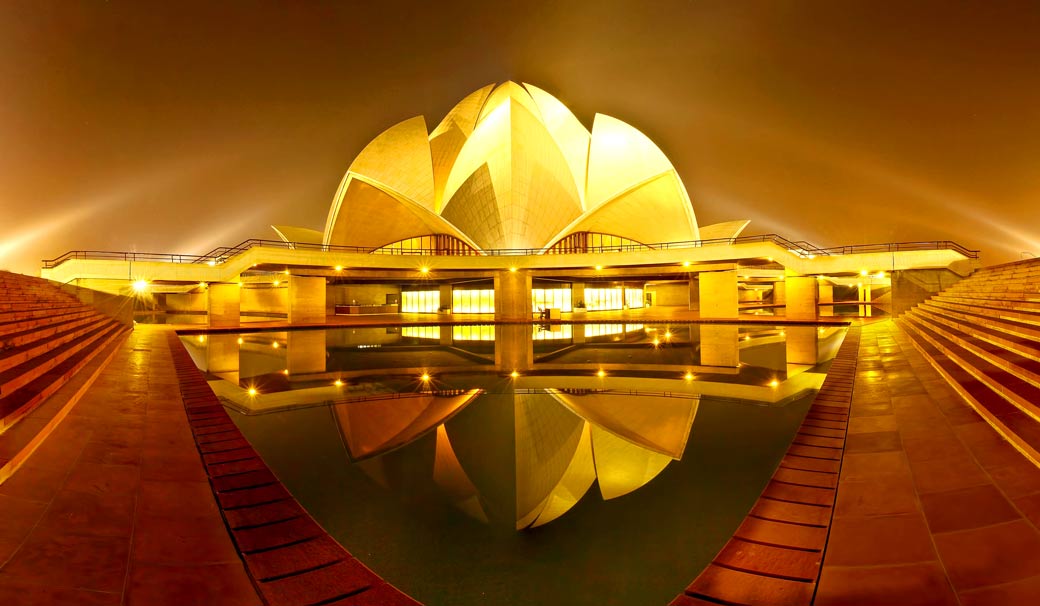
Lotus Temple, New Delhi, India
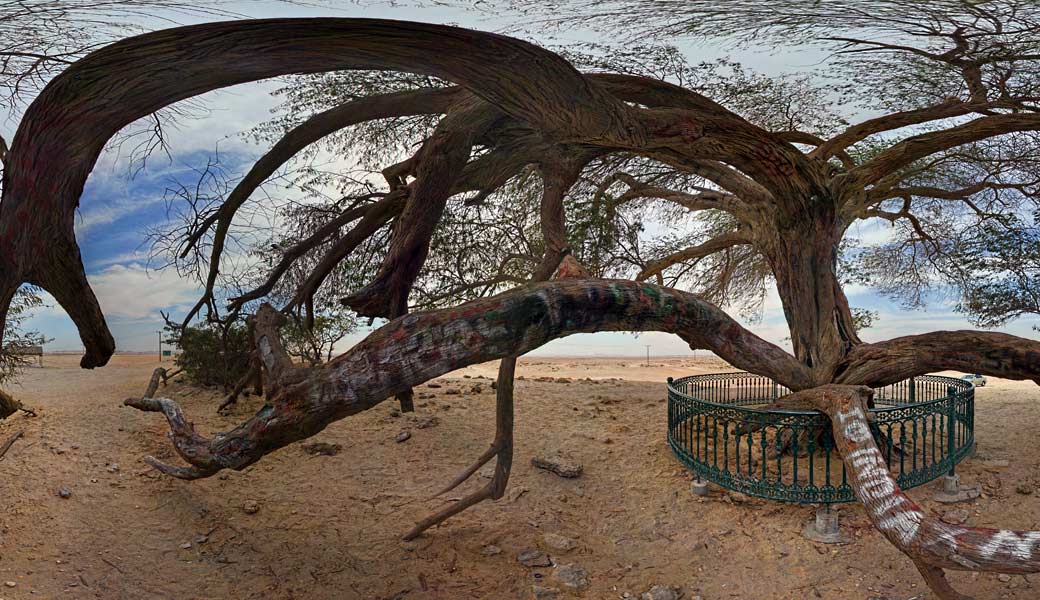
Tree of Life, Bahrain
- Website View website
Moscow city 360-degree virtual reality tour.
Take the virtual tour of the kremlin, moscow river, saint basil’s cathedral and red square.
The Moscow Kremlin usually referred to as the Kremlin, is a fortified complex at the heart of Moscow, overlooking the Moskva River to the south, Saint Basil’s Cathedral and Red Square to the east, and the Alexander Garden to the west.
It is the best known of the Kremlins (Russian citadels) and includes five palaces, four cathedrals, and the enclosing Kremlin Wall with Kremlin towers. Also within this complex is the Grand Kremlin Palace. The complex serves as the official residence of the President of the Russian Federation.
The name “Kremlin” means “fortress inside a city”, and is often also used metonymically to refer to the government of the Russian Federation in a similar sense to how “White House” is used to refer to the Executive Office of the President of the United States. It had previously been used to refer to the government of the Soviet Union (1922–1991) and its highest members (such as general secretaries, premiers, presidents, ministers, and commissars). The term “Kremlinology” refers to the study of Soviet and Russian politics.
All of Moscow’s main streets start at Red Square , so it’s easy to see why this is considered the heart of the city. A massive space of 330 meters by 70 meters, the square is flanked by the Kremlin, Lenin’s Mausoleum, two cathedrals, and the State Historical Museum. In 1945, a massive Victory Parade was held here to celebrate the defeat of Nazi Germany by the Soviet Armed Forces.
St. Basil’s Cathedral , one of the most recognizable buildings on the square, was built in 1555. The unique cathedral has architectural details inspired by Byzantine and Asian designs, as well as details that resemble those found in famous mosques. There are nine individual chapels inside the church, all decorated with colourful mural art.
Yuri Gagarin Is the First Man in Space. Yuri Alekseyevich Gagarin was a Soviet pilot and cosmonaut. He was the first human to journey into outer space, when his Vostok spacecraft completed an orbit of the Earth on 12 April 1961
Created by Leen Thobias P4Panorama
Related posts
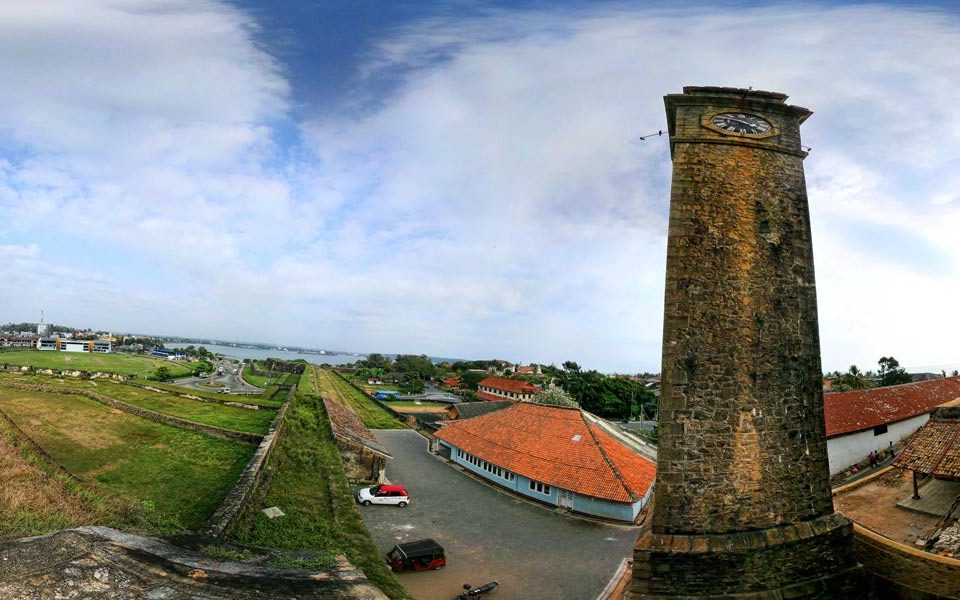
Take the 360 virtual tour of Galle Fort and explore this UNESCO heritage site online from anywhere and at any time. A virtual trip to Galle just a click!
Galle, Sri Lanka
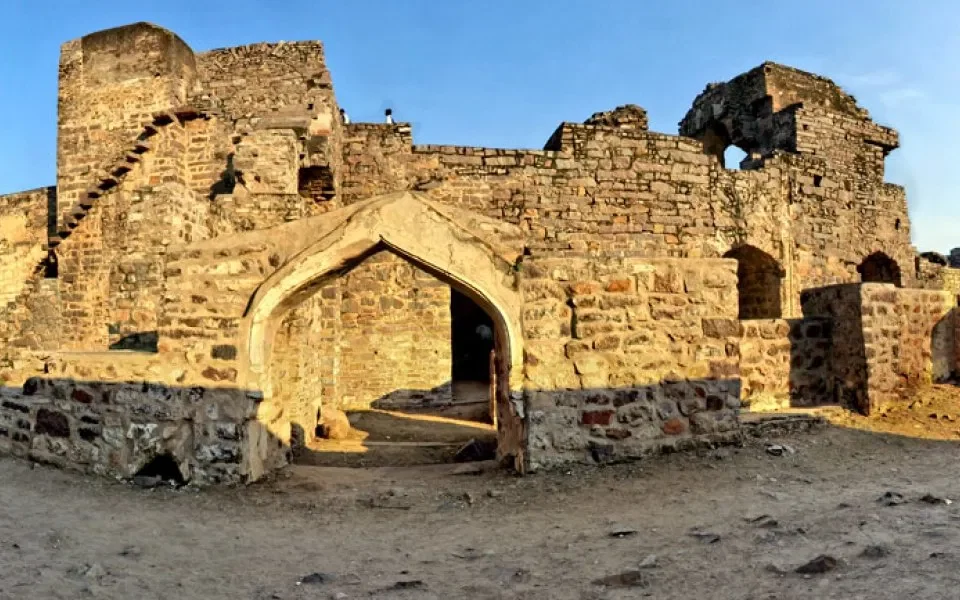
The 360 virtual tour of Golkonda Fort (Golconda), Hyderabad, Telangana, helps the online visitors to explore the place from anywhere and at any time.
Golkonda Fort, Hyderabad, India
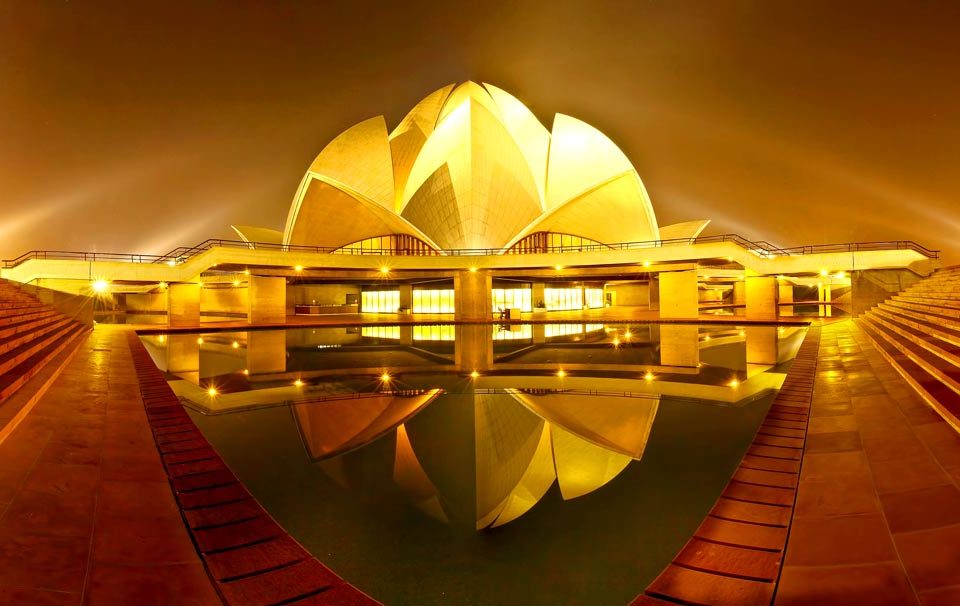
The 360 virtual tour of Lotus temple, Bahai worship center, Delhi helps the online visitors to experience the temple from anywhere in the world.
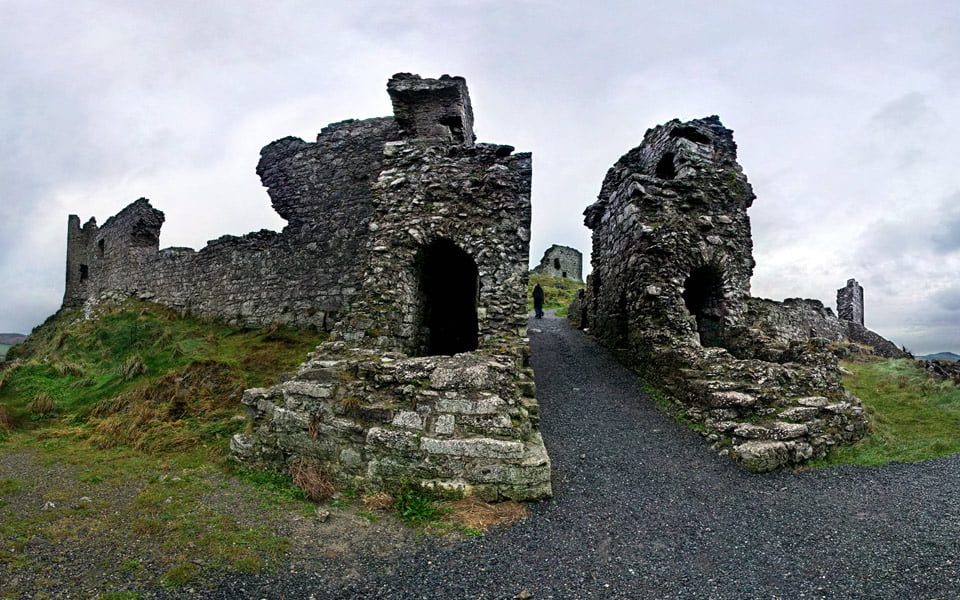
The 360 virtual tour of Dublin and Ireland's tourist places helps the online visitors to watch the beautiful places from anywhere and at any time.
Ireland 360° Virtual Reality

World / Europe / Russia / Moscow, the best

Moscow, the best
We offer you to see virtual tour with the best panoramas of Moscow, Russia. Here you can see full virtual tour with 107 aerial panoramas.
As surprising as it may be, but Moscow, one of the most famous cities in the world, attracts only 5 million tourists a year.
Here are some numbers for comparison: Paris sees 29 million tourists a year, Berlin — 10 million tourists a year.
However, the reasons for such low interest in Moscow lies only in technical complexities of organizing the trip to Russia: there are numerous difficulties in getting visa and mysterious Russian weather often frightens sun-loving and demanding travelers. But those who do make it to the capital of Russia don't get disappointed. Moscow is Europe's largest metropolis with unforgettable atmosphere and unique historical monuments that reflect the history of Russia.
According to the legend Moscow is situated on seven hills. The Kremlin, a settlement around which the modern capital of Russia grew, is situated on one of those hills — the Borovitsky Hill. The first mention of Moscow dates back to year 1147, and since then, for almost nine centuries, the city experienced a myriad of events, and it has been destroyed and rebuilt over and over again.
The main attraction of Moscow, the famous Moscow Kremlin, was originally built from wood, but in the 14th century, after being destroyed again, it was rebuilt from a local white stone. It was from that moment on that Moscow was referred to as "Moscow of white stone" ("Moskva belokamennaya). The walls of the Kremlin were whitewashed long after white stone was replaced with burnt bricks: it was done in the memory of "Moscow of white stone", referring to the glorious part of the city's past.
At the beginning of the 16th century "the seven hills settlement" became the capital of the united Russian state, which gave stimulus to its economic and cultural growth. But while all towers and temples in Moscow were built of stone, the city fire destroyed almost all other old houses in 1812, and Moscow had to be rebuilt all over again.
Burned buildings were replaced with new ones, mostly in classical style: it's those buildings, as well as the modern style ones that were built in the end of the 19th century, that are now comprise what is called "the old Moscow ".
Architecture of the Soviet period has also left a great impact on the face of the city. The Shukhov Tower became one of the first notable sights of Moscow: a hyperboloid structure made from steel mesh shell was very innovative and bold for 1920s. Another notable landmark of the last century is the All-Russian Exhibition Center, one of the 50 largest exhibition centers in the world.
And the most famous buildings are the "Stalinist skyscrapers" — seven high-rise buildings built from the late 1940s to early 1950s. Despite the fact that the idea was taken from American skyscrapers, architects were able to create original architectural solutions, which were later called "Stalin's empire style" or "Soviet monumental classicism". Nowadays these high-rise buildings are considered to be the pinnacle of the post-war Soviet Art Deco style and the most important landmarks that end up on every photo of Moscow.
Three of the seven high-rise buildings are located near the famous Garden Ring. It's a circular avenue with circumference of 15.6 kilometers and a width of 70 meters built (paved with asphalt) on top of ancient earth mounds that were used to defend Moscow in the 16th century.
There were more than 130 rivers in Moscow, but now most of them are backfilled. However, the city can offer you very beautiful views of the water: the famous Moskva River, and the smaller Yauza River, Setun River, Shodnya River, Gorodnia River, and many others.
Bridges, just like Moscow's buildings, are unique monuments of Moscow. For example, the Crimean Bridge built in 1938 was the first of the six European bridges that is 168 meters in length. There is also the famous Borodinsky Bridge built to commemorate the Battle of Borodino. Among the most interesting modern bridges is Zhivopisny Bridge in Serebryany Bor, which has no analogues in the world. Its pylon has a form of a huge arch structure spanning from one river bank to the other at acute angle.
In 1990s the Victory Park was opened on Poklonnaya Hill to commemorate the Great Patriotic War (1941-1945). The park consists of several churches of different denominations, museums, monuments, a huge collection of military equipment, and 1418 fountains (1418 refers to number of days the war continued), which turn dark crimson during the night.
Even the shortest list of all historical landmarks and sights in Moscow will take more than one page. Moscow is a huge metropolitan city spread over an area of 2,500 square kilometers. It has numerous river and parks, narrow streets and big highways, cozy homes in classical style and cold skyscrapers. Each period gave Moscow something new: in 1940s the city was surrounded by a ring road (MKAD), in 1950s the capital saw the opening of the Olympic complex Luzhniki, in 1960s Ostankino TV tower was built in Moscow, in 1990s the largest business center called Moscow-City was built.
Moscow is the case where you just can't describe everything, and as they say, "A picture is worth a thousand words". AirPano team proudly presents panorama of Moscow, the city whose history is inextricably linked with the history of our country, and whose monuments refer to all areas of Russian culture and architecture.
Photo by Dmitry Moiseenko , Ivan Roslyakov , Stanislav Sedov , Sergey Semenov , Dmitry Chistoprudov

Open Gallery

Virtual Travels in 360°
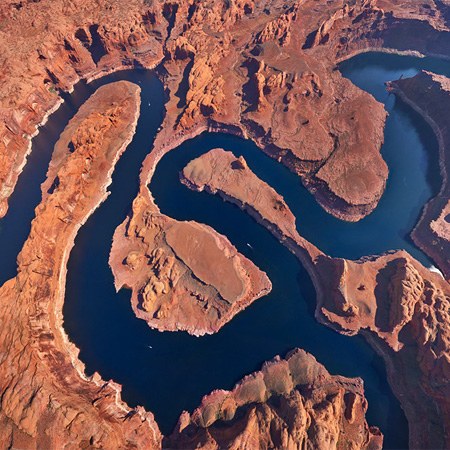
Me trasporta a esa época de la historia, de grandes hombres y Zarinas.
Maria Ceballos, Colombia
Jimena Echandi, Costa Rica
Beautiful city and tremendous job of photography and capturing the eloquence of Moscow.
Ed Nelson, USA
ABSOLUTELY SPECTACULAR
NORM LAPALME, USA
Beautiful professional presentation that shows the beautiful city of Moscow, a big thank your team
Karel Hofmann, Czech Republic
An excellent visual presentation, which reveals the delightful, magnificent splendour of Moscow, The Best
Isaac Moses, United Kingdom
karthik Reddy, India


IMAGES
VIDEO
COMMENTS
This tour starts in Gallery A - The Afterlife Gallery. Click on the map icon in the 360 tour screen to see the Tour Map and to visit the different galleries in our museum. Learn more about a featured object by clicking on the "i" symbol.
Ancient Egypt in Smithsonian's National Museum of Asian Art. Charles Lang Freer took three trips to Egypt between 1906 and 1910, initiating a collection that now includes more than one thousand objects dating to as early as 2600 BCE View the Ancient Egyptian Collection from the National Museum of Asian Art which holds a world-famous collection of glass vessels produced during Dynasty 18 (ca ...
April 17, 2020. A virtual view of the Red Monastery, one of five Egyptian heritage sites newly detailed in 3-D Egypt's Ministry of Tourism and Antiquities. Earlier this month, Egypt's Ministry ...
Take a virtual tour to see our favorite statues of famous pharaohs and tomb relics. If you can't actually visit the Egyptian Museum in Cairo, do the next best thing: Virtually tour some of the exhibits below. It's bad enough that I've been self-quarantined inside our home for a week and a half now, with no end to this isolation in sight.
Welcome guys to a new virtual tour of the Egyptian Museum located in Cairo. Join us on an adventure through the time of the Egyptians and take a look at the ...
Embark on a virtual journey through tim... "Step into the mesmerizing world of ancient wonders with this immersive VR 360 video of the Egyptian Museum in Cairo!
Today we take you on an exclusive tour to see the iconic mask of the Golden Pharaoh, Tutankhamun, in the Egyptian Museum in Tahrir. Tutankhamun has captivated audiences worldwide since British archaeologist Howard Carter discovered his tomb back in 1922. He has become an international icon of our Egyptian civilization. Painstakingly excavated over the course of almost ten years, the tomb's ...
The Egyptian Museum is the oldest archaeological museum in the Middle East, and houses the largest collection of Pharaonic antiquities in the world. The museum displays an extensive collection spanning from the Predynastic Period to the Greco-Roman Era. The architect of the building was selected through an international competition in 1895, which was the first of its kind, and was won by the ...
The hall of King Tutankhamun's treasures at the Egyptian Museum in Cairo's Tahrir Square is the subject of the virtual tour the Ministry of Tourism and Antiquities launched on Thursday on social ...
About. Virtual Tour of Giza Pyramids and Egyptian Museum With this virtual tour we take you to the Pyramids of Giza, one of the remaining wonders of the Ancient World. A lot of mystery still revolves around these fascinating Pyramids and if you want to know more about how these structures were built and for which reasons, t then continue down ...
The Virtual Visit begins with an introduction to the British Museum and its collection of eight million objects. It centres around a variety of ancient Egyptian objects from the British Museum collection. Students are recruited as British Museum myth-busters and they are issued a to-do list with three areas of ancient Egyptian history to ...
Why a Virtual Museum? —a foreword by our curator—. Museum with Egyptian and Mediterranean antiquities previously unavailable to the public. Includes stunning iridescent glass collection, bronze statuettes, shabtis, scarabs, amulets, jewelry, and mummy of King Pedibastet, plus interactive reference tools.
This website aims to collect them into a global virtual museum, which can be visited at any time, from any place. The Global Egyptian Museum is a long-term project, carried out under the aegis of the International Committee for Egyptology (CIPEG). The Basic Mode, currently showcasing 1340 highlights, is geared to the interested public.
Take the 360° Virtual Reality Tour of Egyptian Pyramids, the Nile River, the Red Sea, etc Egyptian Pyramids. The Egyptian pyramids are ancient pyramid-shaped masonry structures located in Egypt. As of November 2008, sources cite either 118 or 138 as the number of identified Egyptian pyramids. Most were built as tombs for the country's ...
Virtual tours. Ancient Egypt virtual tour. Discover 5000 years of human life in the Nile Valley, whether it's learning about ancient burial practices, exploring Egypt's relationship with other civilisations, or reading spells from the Book of the Dead.
This all-new multisensory museum experience provides visitors with a window into the life and accomplishments of Ramses II, more commonly known as Ramses the Great, who ruled Egypt for 67 years - the second longest reign for any pharaoh, living an astonishing 92 years. Exclusive to Sydney, Ramses & Gold of the Pharaohsfeatures 182 priceless ...
Virtual Tours. Egypt Galleries Tour. Follow along as we delve into 5,000 years of ancient Egypt. Drawing on some of the more than 40,000 objects in the Penn Museum's Egyptian collection, we'll follow the rise of the ancient Egyptian kingdom, learn about Egyptian medicine and protection practices, and discover the importance of Egyptian ...
EGYPTIAN FRUIT BAT CUBS WERE BORN IN MOSCOW ZOO ... Zoo Rules Rules for the purchase and return of electronic tickets Exposure Museum for all 2020 Virtual tour Tickets Zoo map ... Center for the reproduction of rare species of animals History Staff Contacts Articles FAQ Zoo video Press about us Virtual tour Independent evaluation Special ...
Yuri Alekseyevich Gagarin was a Soviet pilot and cosmonaut. He was the first human to journey into outer space, when his Vostok spacecraft completed an orbit of the Earth on 12 April 1961. Created by Leen Thobias P4Panorama. Take the 360° virtual reality tour of Moscow City, Kremlin, Hall of Commanders, Red Square, Moscow River, Victory Park.
Moscow, the best. We offer you to see virtual tour with the best panoramas of Moscow, Russia. Here you can see full virtual tour with 107 aerial panoramas. As surprising as it may be, but Moscow, one of the most famous cities in the world, attracts only 5 million tourists a year. Here are some numbers for comparison: Paris sees 29 million ...